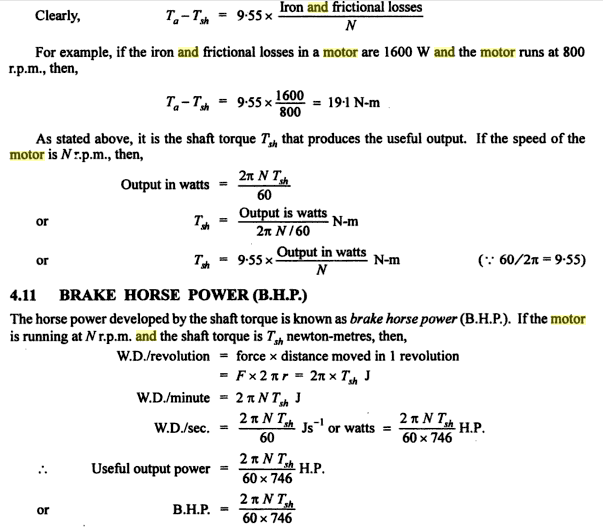ARMATURE TORQUE OF D.C. Motor
Torque is the turning moment of a force about an axis and is measured by the product of
force (D and radius (r) at right angle to which the force acts i.e.
T =Fxr In a d.c. motor, each conductor is acted upon by a circumferential force F at a distance r,
the radius of the armature (Fig. 4-11). Therefore, each conductor exerts a torque, tending to rotate the armature. The sum of the torques due to all armature conductors is known as gross or armature torque (Ta). Let in a d.c. motor r— average radius of armature in m l— effective length of each conductor in m z-total number of armature conductors A — no of parallel paths i — current in each conductor — Ia/A B-average flux density in Wb/m2 φ-flux per pole in Wb p-number of poles Force on each conductor, F=BiL newtons Torque due to one conductor
=F x r newton- metre Total armature torque,
Ta=ZFr newton-metre
Ta=ZBilr
SHAFT TORQUE
torque which is available at motor shaft for doing use full work is known as torque. It is
represented by Tsh Fig. 4.12 illustrates the concept of shaft torque. the total or gross torque Ta developed in the armature of a motor is not available at the shaft because a part of it is lost in overcoming the iron and frictional losses in the motor. Therefore, shaft
torque Tsh is somewhat less than the armature torque Ta. The difference Ta — Tsh. is called lost torque.




Comments
Post a Comment